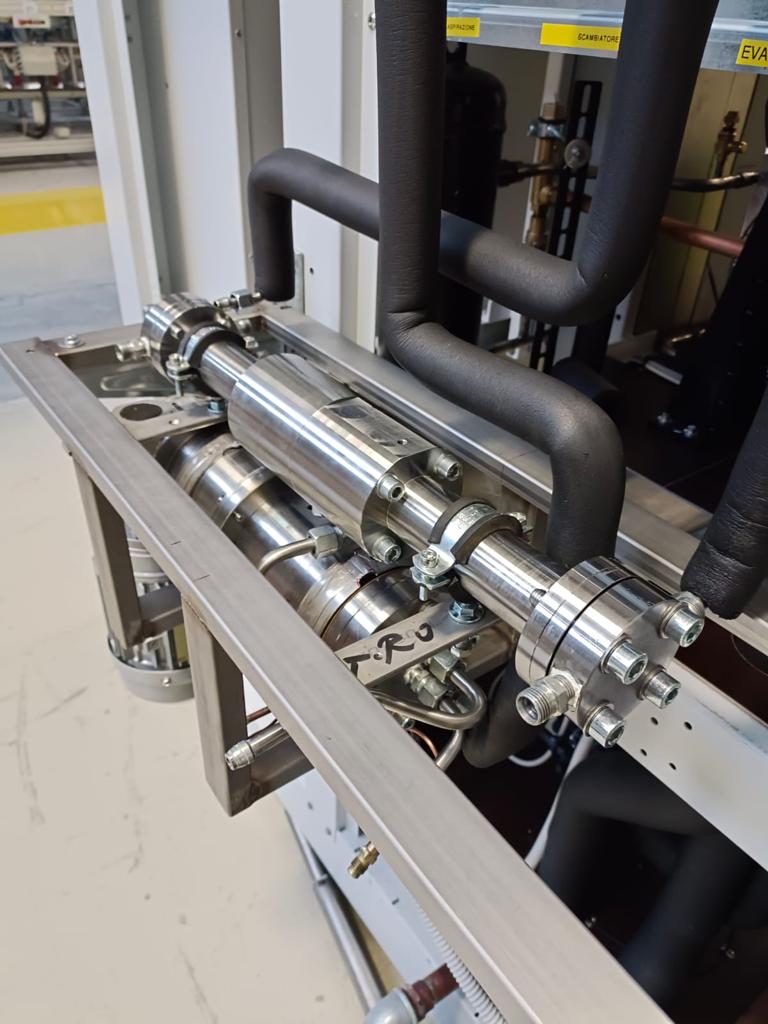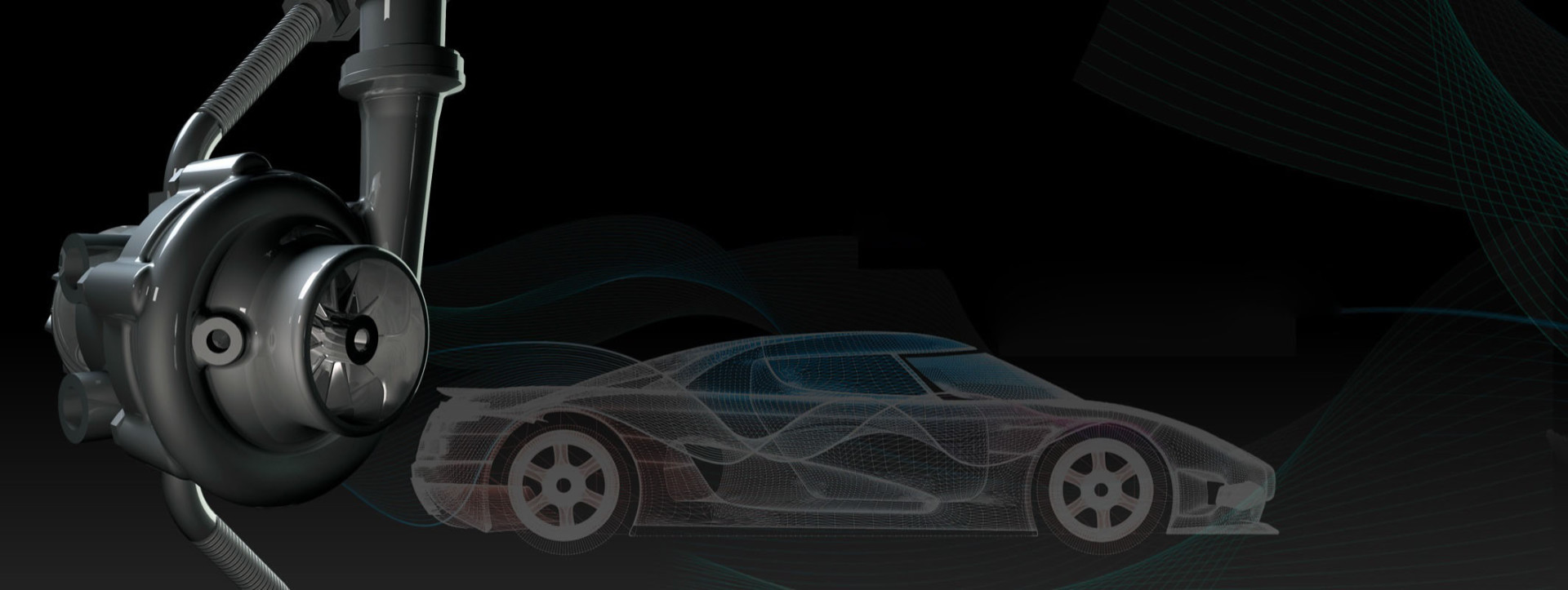


Turboalgor develops new technology to increase the efficiency of CO₂ plants
One of the ways to make a refrigeration plant more efficient is to recover all the residual energy that would otherwise go unused-for example, the high pressure of the gas coming out of the condenser-and, with various stratagems, use it to decrease the work of the compressor, for example, by pre-compressing the gas coming from the evaporator. This is exactly what the solution proposed by the company Turboalgor, a spin-off of Angelantoni Industries, whose turbo-compressor applied to HFC power plants, recovers energy from the high-pressure gas coming out of the condenser and uses it to precompress a part of the refrigerant going to the compressor from the evaporator. This is zero-cost energy that saves electricity in the plant therefore lowering the utility bill. This solution, now widely established in the market, achieves energy savings of up to 20 percent (for low temperatures) compared with a system without a turbocharger.
Today Turboalgor is working on a solution that applies the same concept-the recovery of unused energy to increase overall system efficiency by decreasing compressor work-that is appropriate for CO₂ refrigeration systems. Why the interest? Engineer Maurizio Ascani, Innovation Technology Manager at Turboalgor Srl, explains, "Today, thanks to the F-gas Regulation, most new installations, especially in commercial refrigeration, are CO₂, because this refrigerant offers undoubted environmental advantages and above all is safe from any future legislation. But CO₂ systems, in their basic configuration, are not everywhere efficient, which justifies the various solutions that have arisen to be able to increase their efficiency, such as parallel compression or the use of ejectors. Therefore, any solution that can increase the efficiency of the basic configuration while maintaining simplicity in configuration and low cost is welcome. Since the efficiency achieved by our turbocharger solution on HFC plants is an attractive efficiency, we think that using the same principle can also offer interesting energy savings for CO₂ plants."
Same concept, different technology
However, the solution for CO₂ has to be based on a new technology, because the turbocharger is not suitable for use with this refrigerant, which works at too high pressures and requires less circulating fluid than an HFC system. So Turboalgor set out to find alternative technological solutions and found them in the Free Piston Expander, a solution consisting of a cylinder within which a piston moves alternately from one end of the cylinder to the other. This movement allows for pre-compression of the gas fed into the cylinder. Also in the Free Piston Expander, as in the turbocharger, the gas that is partially precompressed comes directly from the evaporator and goes to the compressor. But what sets the Free Piston Expander in motion, enabling it to do this work at zero energy cost? The energy to move the piston in the cylinder comes from the high-pressure gas (about 50 bar), which, through a special valve - called a rotary valve or control valve - is brought from the phase separator to the Free Piston Expander cylinder, setting the piston in motion without consuming energy. The precompression of the gas from the evaporator, therefore, occurs without active energy consumption but by harnessing the high-pressure energy of the gases in the system-a full-fledged energy recovery that manifests itself as less compressor work and less plant energy consumption.
Free Piston Expander, a road ahead .
Both of Turboalgor's solutions, the turbocharger for HFC systems and the Free Piston Expander for CO₂ systems, are new technological solutions for the refrigeration world, imported from other industries. For example, the turbocharger has a long application tradition in the automotive world where its "life and death" is known. Different, however, is the case of the Free Piston Expander, which does not have such a proven industrial and technological history. Says Ascani, "There are only academic studies on this technology but no industrial applications. This for us means we have to experiment more because we are opening a completely new road, not only for refrigeration." In itself, the Free Piston Expander is not complex to implement, quite the contrary. Says Ascani, "It is a relatively simple component both to design and to make and install. It is easy to build, has high thermodynamic efficiency and a wide oscillation frequency, does not require lubricants, and is relatively compact; therefore, it takes up little space in the plant and has high reliability."



First results
According to theoretical calculations, the Free Piston Expander applied to a basic configuration of a 15kW transcritical plant and -20°C evaporation temperature allows savings of 18.5 percent at gas cooler temperatures of 40°C and 13.1 percent at gas cooler temperatures of 30°C. "The first prototypes achieved about 70% of the theoretical values. Not bad, but we are working to get closer to the optimal results." By achieving them, the Free Piston Expander will allow higher efficiencies than that of other technologies, such as the ejector.
Free Piston Expander: the advantages
The Free Piston Expander is applicable to the basic configuration of the transcritical system. It is, that is, alternative to ejector or double compression. Its installation does not require structural modification of the basic system, but more importantly, it is a system that, should it fail, will not affect the operation of the system. Ascani emphasizes, "Should a problem occur in the operation of the Free Piston Expander, cold production is still assured. Simply, until the fault is repaired, the system works at its standard efficiency. This is also why we believe it is a superior solution to other solutions, not only because of the performance it could achieve but also because of the inherent safety of the system."
Finally: the tests conducted and prototypes made are for a 15kW system. Is it possible to scale up the Free Piston Expander? "Here we investigated two possible ways: either increasing the size of the component or using two pistons in series. Both solutions are possible. We are testing both of them."
A brief "review": the Turboalgor turbocharger for HFC systems
The result of cross-disciplinary thinking, Turboalgor's turbocharger comes from the adaptation of a component from the automotive world to the refrigeration system. The principle of operation is the same: just as in the automotive unit the energy from hot exhaust gases moves the turbine and drives the compressor, without electrical consumption, but by transforming kinetic energy into mechanical energy, so in the refrigeration unit a part of the refrigerant liquid leaving the condenser is diverted to the turbocharger, which recovers high-pressure energy from it and transforms it into mechanical compression energy. With this, part of the refrigerant is precompressed, which is then sent to the main compressor, requiring it to do less work and thus less electrical consumption. From this reduction comes the efficiency of adding the Turboalgor Kit to the refrigeration circuit of an HFC system.


Turboalgor is the company at the head of COLD ENERGY, a project financed by the European Community with the aim of reducing consumption and emissions and improving the efficiency of cooling systems.

Turboalgor contributes to increasing the competitiveness of European companies in the refrigeration industry.
Using cutting-edge technology, Turboalgor is able to cut carbon emissions, in line with EU directives.
With its three application solutions, Turboalgor can intervene on both new and existing systems.